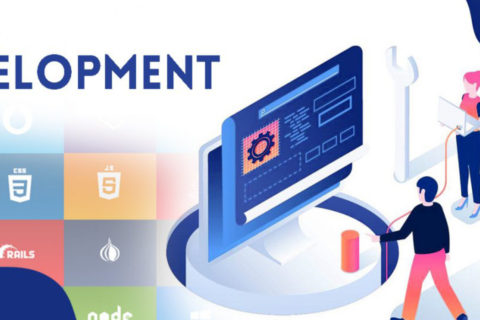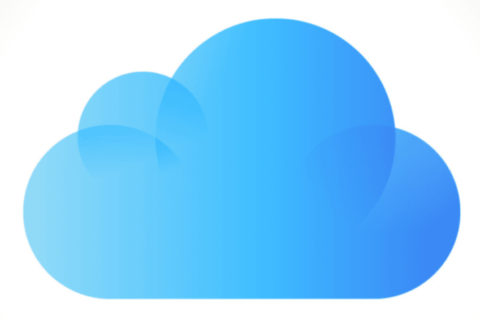Overview
The word data analytics refers to the process of analyzing datasets in order to draw conclusions about the information contained within them. You can use data analytic techniques to take raw data and discover trends in order to gain useful insights. Many data analytics techniques nowadays depend on specialized systems and applications that combine machine learning algorithms, automation, and other features. Data analysts and data scientists use data analytics tools in their analysis, and companies use them to make decisions. Data analysis will assist businesses in better understanding their clients, evaluating their advertising campaigns, personalizing content, developing content strategies, and developing new products. In the end, data analytics will help companies improve their bottom line and boost their results.
For companies, the data they use may be historical data or new information gathered for a specific project. They can either get it directly from their clients and site users, or they can buy it from other businesses. First-party data is information that an organization gathers from its own customers. Second-party data is information that a corporation obtains from a well-known entity that gathered it. Third-party data refers to the aggregated data that a business purchases from a marketplace. A company’s data can provide information about a target audience’s demographics, preferences, and habits, among other things.
4 Ways to use data analytics
The concept of data analytics captures the wide scope of the field as the process of analyzing raw data to identify patterns and answer questions. However, it contains a variety of strategies with a variety of objectives. Some elements of the data analytics process will aid a variety of projects. An effective data analytics initiative would give you a good image of where you are, where you’ve been, and where you can go by integrating these elements. Businesses can gain a lot of value from data, but they require the analytics aspect to unlock that value. Businesses can use analysis tools to gain knowledge that can help them enhance their results. It will assist you in improving your consumer awareness, ad strategies, budget, and more.
Importance of Data Analytics
When data analytics becomes more important in the business world, it’s more important for the organization to learn how to use it. The following are some advantages of data analytics:
Improved decision-making:
Companies may use data analytics to help them make informed decisions. Data analytics takes out a lot of the guesswork when it comes to marketing strategies, content creation, product development, and other tasks. It provides you with a 360-degree view of your clients, allowing you to better understand and serve them. Furthermore, modern data analytics technology allows you to capture and analyze new data on a continuous basis and keep your understanding up to date as circumstances shift.
More effective marketing:
You will market to your audience more efficiently if you have a clearer understanding of who they are. Data analytics also provides you with valuable insights into how your campaigns are going, allowing you to regulate them for the best results. You can use this data to manually or automatically change your targeting parameters or to create new messaging and innovative for different segments. More conversions and less ad waste result in improved targeting.
Better customer service:
Data analytics will help you gain a better understanding of your customers. This allows you to tailor customer service to their specific needs, increase personalization, and strengthen customer relationships. Your data will disclose details about your customers’ contact habits, desires, and concerns, among other things. Having a central repository for this information also means that the entire customer support staff, as well as your sales and marketing departments, are on the same page.
More efficient operations:
Data analytics will assist you in streamlining your operations, saving money, and increasing your profits. You’ll spend less time making advertisements and content that don’t fit your audience’s needs if you have a better understanding of what they want. This means less money will be spent and the campaigns and content strategies will produce better results. Analytics will help you raise sales by increasing conversions, ad revenue, or subscriptions in order to lower the costs.
What Benefits Can Data Analytics Provide?
You can gain insights into your audiences and campaigns by gathering different types of data from various sources. This allows you to fine-tune your targeting and forecast potential consumer activity. Customer behavior data is one type of data that is extremely important. This is information regarding a user’s individual behavior. They can understand by clicking on an advertisement, make a purchase, leave a comment on a news story, or like a social media post. Signing up for your email list is one way for a customer to show interest in your company. They can also show interest in a subject by reading about it on your website. If they have interest in a product if they click on one of your advertisements for it. Survey responses, social media likes, and video views are all possible sources of customer bond information.
You will get insights into the consumer groups that are most likely to be interested in your brand, content, or products by combining this data with knowledge about your current customers’ demographics. Customers’ ages, races, income, marital status, and other demographic factors are all included in demographic data.
Data Analytics Technology
Data analysis isn’t a novel concept. However, thanks to the increasing amount of data and advanced analytics technologies available today, you can gain much deeper data insights much faster. Big data and digital technology allow for more precise and quantitative observations. You may use current data to make immediate decisions in addition to using data to guide future decisions. We make modern data analytics possible by a number of technologies, including:
Machine Learning: Artificial intelligence (AI) is the study and application of computer systems that can mimic human intelligence in order to complete tasks. Machine learning (ML) is a subset of artificial intelligence (AI) that is essential for data analytics and includes self-learning algorithms. Without someone specifically programming the algorithm to draw that conclusion, machine learning allows applications to take in data and evaluate it to predict outcomes. A machine learning algorithm can be trained on a small sample of data and will continue to learn as more data is collected. Over time, this becomes more accurate.
Data management: Before you analyze data, you must first set up protocols for controlling data flow in and out of your systems as well as keeping your data structured. You must also ensure that the data is of high quality and that it is stored in a central data management platform where it can be accessed when needed. Setting up data management software will ensure that everybody in your company is on the same page when it comes to data organization and management.
Data mining:
The method of searching through vast volumes of data is referred to as data mining. We do this to discover associations between data points and to recognize trends. It allows you to sift through vast datasets and determine what matters. You can then use this data to perform analysis and make decisions based on it. With today’s data mining technology, you can complete these tasks in a fraction of the time.
Predictive analytics:
Predictive analytics technology allows you to evaluate historical data in order to forecast future outcomes and the probability of different outcomes. Statistical algorithms and machine learning are commonly used in these technologies. Businesses would be able to make better choices and prepare themselves for success if they can make more accurate forecasts. It enables them to anticipate the needs and concerns of their clients, forecasts future developments, and remain ahead of the competition.
Challenges of data analytics
Although data analytics can help businesses in a variety of ways, it is not without its drawbacks. Businesses can solve these challenges by working with the right partners and using the right tools. Data collection is one of the most difficult aspects of data analytics. Businesses have a lot of data they might obtain, and they need to figure out what to prioritize.
Data collection necessitates the use of so that can collect information from website visits, ad clicks, and other interactions and present it in an understandable format. Data collection necessitates software that can collect information from website visits, ad clicks, and other interactions and present it in a functional format. You’ll need a place to store your data once you’ve collected it. This can take up a lot of space and hold a lot of different kinds of data. You must also ensure data accuracy in order for the findings to be reliable. Furthermore, the data must be open and not siloed so that everybody in your company has access to the same archive. Finally, you must possess the expertise and tools required to interpret the data and provide insights.
Bottom Line
Data analytics has a wide range of uses. Big data analysis can improve productivity in a variety of industries. In a world that is becoming highly competitive, companies must improve their results. In the banking and finance industries, data analytics is used to forecast business dynamics and evaluate risk. Financial institutions use data analytics to identify and avoid fraud in order to increase productivity and reduce risk. However, data analytics can be used for more than just optimizing gains and ROI. For healthcare (health informatics), crime prevention, and environmental security, data analytics may provide essential information. These data analytics applications make use of these tools to make the world a better place. Though statistics and data analysis have often been used in scientific research, advanced statistical techniques and big data have opened up many new possibilities. Data analytics is now widely used in healthcare too.
Do you find this blog engaging? Then please do check out our rest blogs too. If you have any queries then without any hassle, please do contact us. You can also browse our website to know more about our services and technologies.




